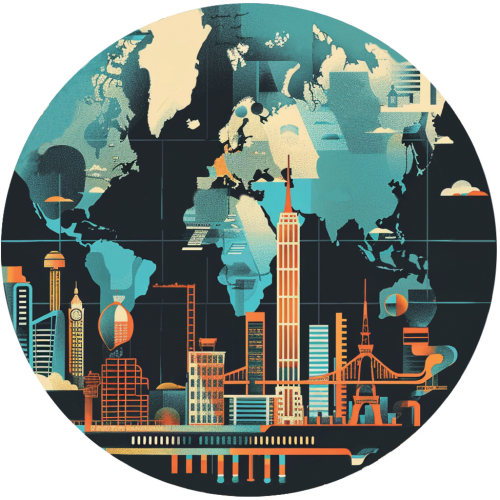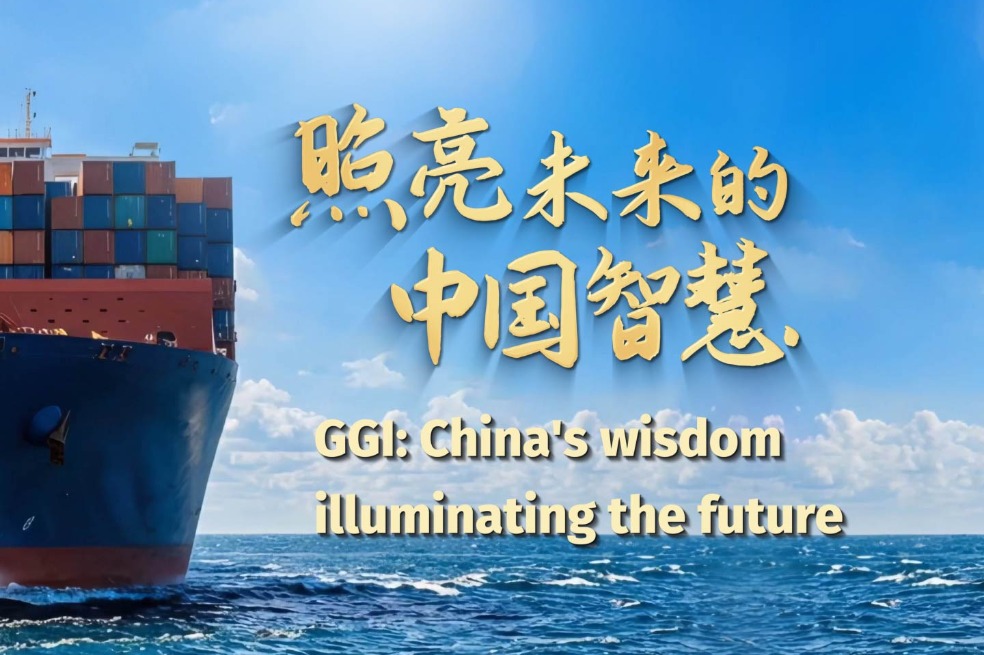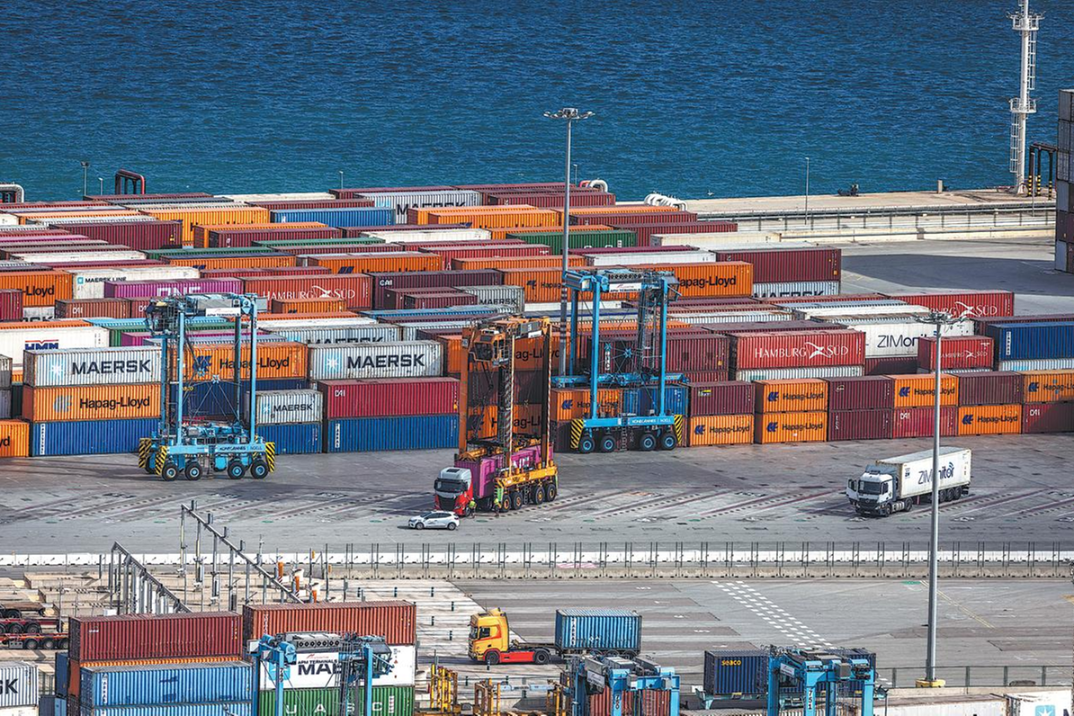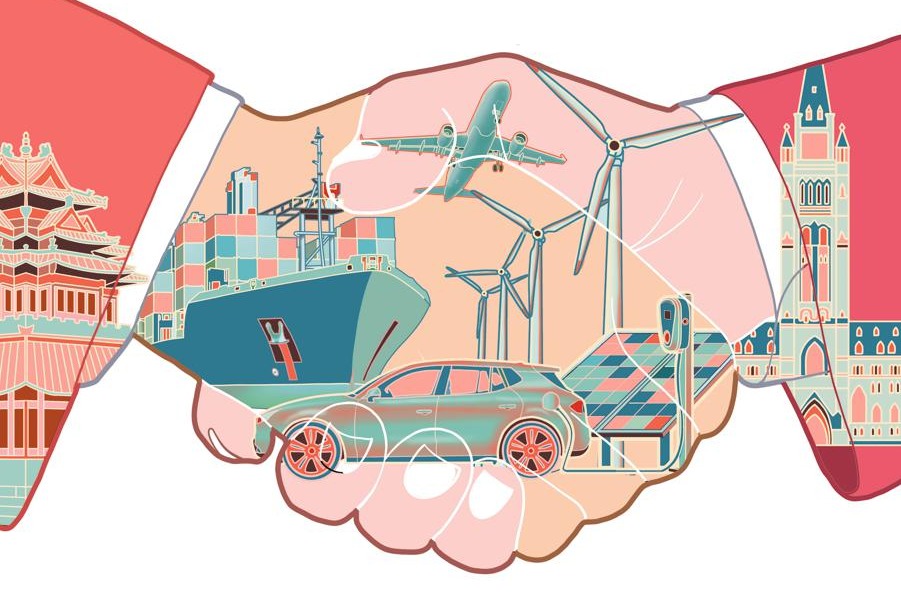In alignment


WANG XIAOYING/CHINA DAILY
Synergizing China's BRI with the EU's Global Gateway would promote the economic growth and sustainable development of the whole of Eurasia
The world is currently facing increasing geopolitical tensions that have exacerbated the fragmentation of the global economy and the disruption of the supply chains, which have led to shortages and rising prices, calling into question the reliability of global trade. There is an urgent need to deepen the interconnection between regions as a basis for promoting sustainable global development.
In this regard, the Belt and Road Initiative, an effective platform for international economic cooperation, has given additional impetus to the development of the world economy and formed a global network of interconnectedness, consisting of transport and information corridors.
The China-Europe Railway Express has completed more than 85,000 trips since it was launched, reaching more than 200 cities in 25 countries in Europe and creating tens of thousands of local jobs. Over the past 10 years, trade in goods between China and other Belt and Road countries has doubled.
From 2016 to 2022, the number of trains passing through Central Asia increased over nine times from 1,702 to nearly 16,000 per year. In the Xi'an Declaration of the China-Central Asia Summit, the parties emphasized the need to increase the status of Central Asia as one of the most important trans-Eurasian transportation hubs.
At the same time, the development of safe corridors connecting China and Europe with Central Asia for access to the Middle East and South Asia is of strategic importance. In this regard, the China-Kyrgyzstan-Uzbekistan railway and road project, as well as Termez-Mazari-Sharif-Kabul-Peshawar Railway, will play key roles. Currently, due to the attacks on shipping in the Red Sea and the conflict between Russia and Ukraine, the Trans-Caspian International Transport Route has every chance of becoming the largest global transport route.
At the end of 2021, the European Union approved a new international initiative called the Global Gateway. According to European Commission President Ursula von der Leyen, it represents a new global "alternative "to Chinese investment.
At the Investors Forum for EU-Central Asia Transport Connectivity launched on Jan 29 in Brussels, the European Investment Bank signed memorandums of understanding on co-financing projects with Kazakhstan, the Kyrgyz Republic, Uzbekistan and the Development Bank of Kazakhstan worth in total 1.47 billion euros ($1.6 billion).
However, it is worth noticing that within competition there are also areas of cooperation and interaction between parties to develop transport infrastructure and improve access to markets. The conjunction of the BRI with the Global Gateway would create the necessary conditions for economic growth and the sustainable development of the entire Eurasia, especially Central Asia and the South Caucasus. Chinese Foreign Minister Wang Yi said at a news conference following the third Belt and Road Forum for International Cooperation in October 2023 that the BRI and the Global Gateway strategy could be aligned to leverage their respective strengths and create synergies to help developing countries accelerate infrastructure development.
Despite the EU's declared interest in expanding transport corridors for the integration of Central Asia, there is an insufficient level of investment in infrastructure projects in the region. Within the framework of the forum in Brussels, the European Bank for Reconstruction and Development signed a memorandum of understanding with Kazakhstan to allocate 1.5 billion euros to projects already under preparation for the comprehensive development of transport communications in the Central Asian region. But, Minister of Transport of Kazakhstan Marat Karabayev emphasized that the implementation of large infrastructure projects will require at least 40 billion euros.
The Global Gateway strategy was only launched in 2021 and it is planned to mobilize up to 300 billion euros by 2027. Yet of this amount, only 10 billion euros are allocated for Central Asian countries. Over the past 10 years, EU member states have invested more than $121.3 billion in Central Asia, more than 40 percent of the total foreign direct investment in the region. The bulk of EU countries' FDI went to Kazakhstan, and more than 50 percent of this FDI went to the mining industry, in particular oil and gas production. Transport and warehousing accounted for only 5 percent.
The BRI has been implemented since 2013 and has stimulated $1 trillion investment over 10 years. By 2019, China had implemented 261 projects in Central Asia with a total value of $136 billion. Most of these investments were aimed at creating or improving infrastructure for transporting goods and cargo and developing natural resources. China remains the main investor in transport and logistics infrastructure in Central Asia. In order to make rational use of allocated financial resources for the development of the infrastructure of the Trans-Caspian International Transport Route, it is necessary to ensure appropriate coordination and cooperation in the implementation of projects within the BRI and Global Gateway in Central Asia.
For example, there is already the first implemented joint project between the European Bank for Reconstruction and Development and the Asian Infrastructure Investment Bank — the construction in 2016 of a highway connecting Dushanbe in Tajikistan with the Uzbek border. The two banks have committed $27.5 million each.
Central Asia and the South Caucasus see China and the EU as main trading partners, mainly supplying them with fossil fuels, and their exports are less diversified. To promote the diversification of the economies of Central Asia and the South Caucasus, China and the EU have enormous potential for mutually beneficial cooperation in implementing joint projects in these regions in such sectors as the digital economy, electric vehicles, energy and water saving technologies, construction, light and chemical industries, and the construction of smart cities and smart agriculture. They can also strengthen cooperation in the implementation of digital trade documents and simplification of freight transport procedures.
China and the EU, as world leaders in low-carbon and green development, can build an open and cooperative green technology cooperation chain along the Trans-Caspian International Transport Route to reduce the cost of renewable energy for developing countries, including those in Central Asia and South Caucasus.
China and the EU need to hold in-depth discussions and strive for consensus on the conjunction of the BRI and the Global Gateway in order to achieve stability and sustainable development in Eurasia and in particular in Central Asia and the South Caucasus.
The author is former director of the International Institute of Central Asia, former secretary-general of the Shanghai Cooperation Organization and Uzbekistan's former foreign minister. The author contributed this article to China Watch, a think tank powered by China Daily.
Contact the editor at editor@chinawatch.cn.


































